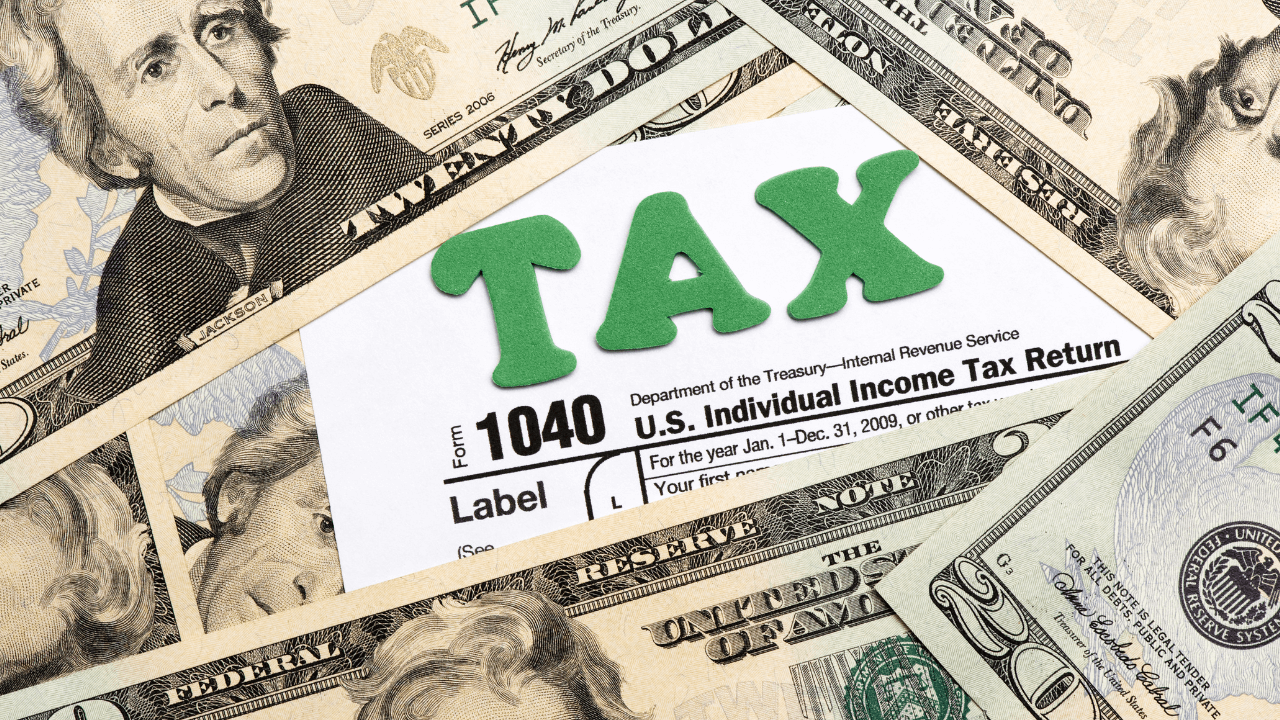Language:
Tax Tips 101 for Your Side Hustle

You’ve got a side hustle.
Maybe it’s designing custom T-shirts, freelance graphic design, or selling handmade crafts on Etsy.
Whatever it is, it’s more than just a hobby — it’s a business.
And just like any business, it comes with its own set of responsibilities, including taxes.
Now, before you roll your eyes and think taxes are a necessary evil, stick with us. Managing your side hustle’s taxes might seem like a BIG and taxing task, but it doesn’t have to be.
In fact, with a few smart tips, you can not only simplify your tax obligations but also boost your profits.
Ready to make tax season a little less daunting? Let’s start by understanding a bit more about handling your taxes.
We promise that by the end of this blog, you’ll see how managing your taxes can actually help your side hustle thrive.
What Falls Under Side Hustles

First things first, what exactly qualifies as a side hustle?
Simply put, a side hustle is any type of employment undertaken in addition to one’s full-time job.
These gigs are usually freelance or piecework in nature, providing a supplemental income.
Here are a few common examples:
👉 Freelance Work: Writing, graphic design, photography, consulting, and more. If you’re offering a service and getting paid for it, that’s a side hustle.
👉 E-commerce: Selling goods on platforms like Etsy, eBay, or Amazon. Whether it’s handmade crafts, vintage finds, or digital products, it’s a side gig.
👉 Gig Economy Jobs: Driving for Uber or Lyft, delivering groceries with Instacart, or renting out a room on Airbnb. These are all part of the gig economy.
👉 Teaching and Tutoring: Offering online courses, tutoring students, or providing music lessons. If you’re sharing your knowledge and earning money, it’s a side hustle.
👉 Content Creation: Blogging, YouTube, podcasting, and social media influencing. Creating content and earning through ads, sponsorships, or affiliate marketing is definitely a side gig.
3 Reasons Why You Should Take Taxes Seriously for Side Hustles

Now that you’ve got the gist of what falls under side hustles let’s dive into why you should care about taxes:
1. Avoiding Penalties
IRS department doesn’t take kindly to those who skip out on their tax duties. You could face hefty fines and penalties if you don’t report your side hustle income. And you definitely don’t want to go down that road.
doola can help you avoid those penalties with our Total Compliance service.
2. Maximizing Deductions
When you take your taxes seriously, you can take advantage of deductions.
These can significantly lower your taxable income, meaning you get to keep more of your hard-earned money. Imagine you earned $10,000 from your side hustle this year.
The IRS would tax you on the full $10,000 without any deductions. But let’s say you have $3,000 worth of deductible expenses. These could include:
✔️ Supplies: $500 spent on materials for your Etsy shop.
✔️ Home Office: $1,000 for the portion of your home used exclusively for your business.
✔️ Mileage: $500 for driving to client meetings and supply stores.
✔️ Software: $200 for accounting software.
✔️ Advertising: $800 for online ads to promote your side hustle.
With these deductions, you can subtract $3,000 from your $10,000 income, leaving you with a taxable income of $7,000.
Now, the IRS only taxes you on $7,000 instead of the full $10,000. That’s a good thing, right?
3. Professionalism
Treating your side hustle like a real business can help it grow.
Managing your taxes properly is part of that. It shows you’re serious and committed, which can attract more clients or customers.
7 Tax Tips for Managing Your Side Hustle

Now, let’s get to the good stuff — how to manage your side hustle taxes like a pro.
Here are seven detailed tips to keep you on track:
Tip #1 Separate Business and Personal Finances
This is the golden rule of side hustles. Open a separate bank account for your side hustle income and expenses. This makes tracking easier and keeps things clean for tax time.
How to Go About It:
✅ Open a separate bank account specifically for your side hustle.
✅ Use this account for all business transactions, including income deposits and expense payments. Hire a bookkeeper if needed.
✅ Get a business credit card for purchasing supplies, paying for advertising, etc.
Keep this in mind. Mixing personal and business finances can lead to horrific confusion, missed deductions, and potential issues if you’re audited by the IRS.
Tip #2 Keep Detailed Records
Record every penny earned and every penny spent. Detailed bookkeeping records can save you headaches if the IRS comes knocking.
How to Go About It:
✅ Use accounting software like QuickBooks or Xero to record transactions.
✅ Save receipts, invoices, and bank statements.
✅ Maintain a spreadsheet if you prefer a manual method.
Without detailed records, you might miss out on deductions or face difficulties if audited.
The IRS requires proof of your income and expenses; failing to provide it can result in penalties.
Tip #3 Understand Tax Obligations
Know the tax forms you need to file. If you’re earning more than $400 from your side hustle, you’ll need to report this income to the IRS.
Here are the main forms you need to be familiar with:
Schedule C (Form 1040): This is used to report income or loss from a business you operated or a profession you practiced as a sole proprietor. It’s the primary form for self-employed individuals, detailing your business’s income and expenses.
Schedule SE (Form 1040): If your net earnings from self-employment were $400 or more, you need to file Schedule SE. This form calculates your self-employment tax, which covers Social Security and Medicare contributions.
Form 1040-ES: If you expect to owe $1,000 or more in taxes, you’re required to pay estimated taxes quarterly. Form 1040-ES helps you estimate and pay these taxes throughout the year.
Not reporting your side hustle income or paying self-employment tax can lead to fines, interest on unpaid taxes, and increased scrutiny from the IRS.
To avoid rookie tax mistakes, you can hire a registered agent, tax consultant, or CPA with experience in your industry or type of side hustle.
They’ll be familiar with relevant deductions and tax issues.
You can also ask for referrals from other business owners or side hustlers. Personal recommendations can help you find trustworthy professionals.
Tip #4 Track Mileage and Home Office Expenses
If you use your car for business purposes, track your mileage. The IRS offers a standard mileage rate deduction. Similarly, if you work from home, you can deduct a portion of your home expenses like rent, utilities, and internet.
For example, if you’re a photographer who travels to different locations for shoots. Track your mileage for each business trip.
Also, if you use a room in your house exclusively for editing photos and managing bookings, calculate the percentage of your home used for business to claim the home office deduction.
How to Go About It:
✅ Use a mileage tracking app or logbook to record business miles driven.
✅ Calculate your home office deduction by measuring the square footage of your dedicated work area and using Form 8829.
Tip #5 Claim All Relevant Deductions
Claiming all relevant deductions is one of the smartest moves you can make for your side hustle.
As mentioned earlier, deductions reduce your taxable income, meaning you owe less in taxes.
Let’s dive into the details of how to identify, claim, and benefit from these deductions, and understand the consequences of not doing so.
How do Deductions Work?
Deductions can significantly decrease your tax liability by reducing the amount of income that is subject to tax.
Types of Deductions
Here’s a breakdown of common deductions for side hustlers:
Supplies: Any materials or supplies needed to run your business. This includes items like office supplies, inventory for your Etsy shop, or tools for your handyman services.
Example: If you spend $1,000 on fabric and sewing materials for your custom clothing side hustle, you can deduct this expense from your income.
Advertising Costs: Money spent on marketing and advertising your business. This includes online ads, business cards, and even the cost of building and maintaining a website.
Example: Spending $500 on Facebook ads to promote your freelance graphic design business is deductible.
Business Travel: Travel expenses related to your side hustle. This includes airfare, hotel stays, meals, and transportation while on a business trip.
Software Subscriptions: Any software or online services that you use for your business. This includes accounting software, design tools, and project management platforms.
Example: Subscribing to Adobe Creative Cloud for $600 a year to use Photoshop and Illustrator for your design projects is deductible.
Home Office: If you use part of your home exclusively for your side hustle, you can deduct a portion of your rent or mortgage, utilities, and internet costs.
Example: If your home office takes up 10% of your home’s square footage, you can deduct 10% of your rent and utilities.
Professional Services: Fees paid to lawyers, accountants, or consultants who provide services related to your business.
Example: Hiring a CPA to prepare your taxes and paying them $300 is deductible.
Claiming all relevant deductions is not just a tax-saving strategy — it’s a smart business practice.
By meticulously tracking your expenses, knowing what’s deductible, and seeking professional advice, you can significantly lower your taxable income and maximize your side hustle profits.
Don’t leave money on the table; use deductions to your advantage and keep more of what you earn.
Tip #6 Hire a Professional
If taxes aren’t your thing, hire a CPA or a tax professional. They can help you maximize deductions, ensure compliance, and provide peace of mind.
DIY tax filing can be overwhelming and prone to errors. A professional ensures accuracy and compliance, potentially saving you money and stress.
Additionally, the cost of their service can be a deductible business expense, too, as mentioned above.
Why Staying Informed is Important
✔️ Maximizing Deductions
Tax laws often introduce new deductions or modify existing ones. By staying informed, you can take advantage of all available deductions, reducing your taxable income and saving money.
For example, a change in tax law might allow you to deduct a new category of business expenses, such as home internet costs.
If you’re unaware of this change, you could miss out on significant savings.
✔️ Compliance
Staying updated ensures you comply with all current tax regulations, avoiding fines and penalties that can arise from non-compliance.
For example, if the IRS changes the requirements for reporting certain types of income and you’re not aware, you could inadvertently file incorrectly, leading to potential audits and penalties.
✔️ Avoiding Penalties
Ignorance of tax law changes does not exempt you from penalties. Keeping up-to-date helps you avoid costly mistakes.
Let’s say there’s a new requirement to pay estimated taxes quarterly, and if you missed it because you weren’t informed, you could face underpayment penalties.
How to Stay Informed About Tax Laws
✔️ Follow Reputable Tax Blogs and Websites
Many tax professionals and organizations maintain blogs and websites that provide updates on tax laws, changes, and tips. Subscribe to newsletters from trusted sources like the IRS website, TurboTax Blog, or doola’s blogs.
✔️ Join Forums and Online Communities
Online forums and communities are great places to learn from other small business owners and freelancers who share their experiences and insights on tax issues. For example, on Reddit, you might find a thread discussing a recent change in tax law that affects home office deductions, providing firsthand experiences and advice.
✔️ Consult Tax Professionals Regularly
Schedule annual or bi-annual consultations with your CPA to review your tax situation and any changes in the law. Tax professionals, such as CPAs and tax consultants, are always up-to-date with the latest tax laws and can provide personalized advice.
How Can doola Help?

Now, if all of this sounds overwhelming, don’t worry. This is where doola comes in. We simplify your side hustle tax management by helping you with business formation, bank account set up, compliance, taxes, & more.
Here’s a sneak-peek of our services:
Business Formation
We are here to help you set up your business structure, whether it’s an LLC, sole proprietorship, or another form. This can provide tax advantages and protect your personal assets.
Bookkeeping Services
Keeping your books in order is crucial, and doola offers bookkeeping services that ensure your income and expenses are tracked accurately. This makes tax time less scary.
Tax Preparation
We help you file your taxes, claim all eligible deductions, and stay compliant with IRS regulations.
Quarterly Tax Payments
We can assist with estimating and paying your quarterly taxes. This keeps you on the IRS’s good side and avoids any underpayment penalties.
Continuous Support
Running a side hustle can be unpredictable. We continuously support, answering any questions you have and offering guidance throughout the year.
So, don’t worry. Take a deep breath, grab a cup of coffee, and sign up for doola Bookkeeping services to tackle those taxes head-on.



